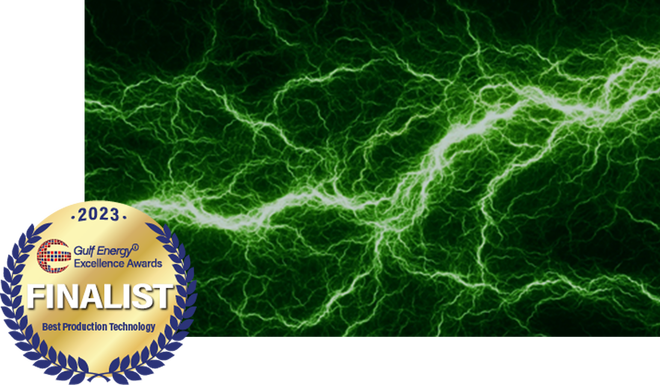Highlights
Benefits
- Reacts slower for deeper matrix penetration of live acid, resulting in dominant wormholes
- Reduces free water requirements simplifying logistics, especially offshore
- Reduces surface horsepower requirements and eliminates diesel, and its related HSE requirements, minimizing carbon footprint
Applications
- Carbonate acidizing stimulations
- Matrix and acid fracturing applications
- High temperature wells up to 300ºF (149ºC)
Sta-Live Extreme™ Polymer-free, single-phase delayed acid system provides effective, total zonal coverage in high temperature carbonate matrix and acid fracturing applications, more efficiently, without damage to the formation—simplifying your operations.
Simpler and safer
The Sta-Live Extreme acid system is the most delayed acid on the market and is:
- 100 times more delayed than conventional hydrochloric acid (HCl) without the high corrosion rates
- Penetrates four times deeper in the formation than conventional hydrochloric acid (HCl)
- Penetrates almost two times deeper than emulsified acid–which means far less treatment volumes are needed to reach penetration depth before completely spending
The retardation of the acid system also increases with temperature, reducing the effects of corrosion.
The acid system also maintains much lower friction pressure (same viscosity as base HCl systems), minimizing horsepower and surface footprint requirements. Because it is a single-phase system, there are no special mixing requirements or need for diesel emulsion, improving HSE and minimizing carbon footprint. This system can also be mixed on-the-fly, further reducing downtime. For additional cost savings, free-water requirements can also be significantly reduced—especially beneficial in offshore applications. The acid system effectively provides total zonal coverage with deep reservoir contact, and can be bullheaded or pumped through coiled-tubing.
Extended
Conventional HCl reacts rapidly with the formation, resulting in face dissolution. The acid system is 100 times more delayed at 275ºF compared to HCl for deeper matrix penetration of live acid, resulting in dominant wormholes, regardless of high or low pumping rates. The acid’s low friction pressure enables high-rate pumping and stimulates deeper into formations, extending reservoir contact. In acid fracturing, the acid’s low viscosity promotes viscous fingering which results in deeper acid-etched fracture half-length.
Cleaner
The acid system has such a low reaction rate it can easily travel deep into the formation without spending and does not leave the reservoir oil-wet, eliminating residual formation damage. Following treatment, there is no formation face dissolution as seen with conventional HCl acid in high temperature environments and low injection rates. No polymer gels or solids are left in the reservoir, further simplifying operations and reducing cleanout costs.

Join Akshaya Singh in this on-demand webinar where he will introduce Sta-Live Extreme™, the new carbonate acid system from Baker Hughes. The presentation will showcase data on how this acid system outperforms conventional emulsified acid systems at higher temperatures (300˚F), high pump rates, and higher concentration (28%HCl) of acid while maintaining low corrosion rates. The presentation will also cover different applications for the system and showcase a successful case study.



